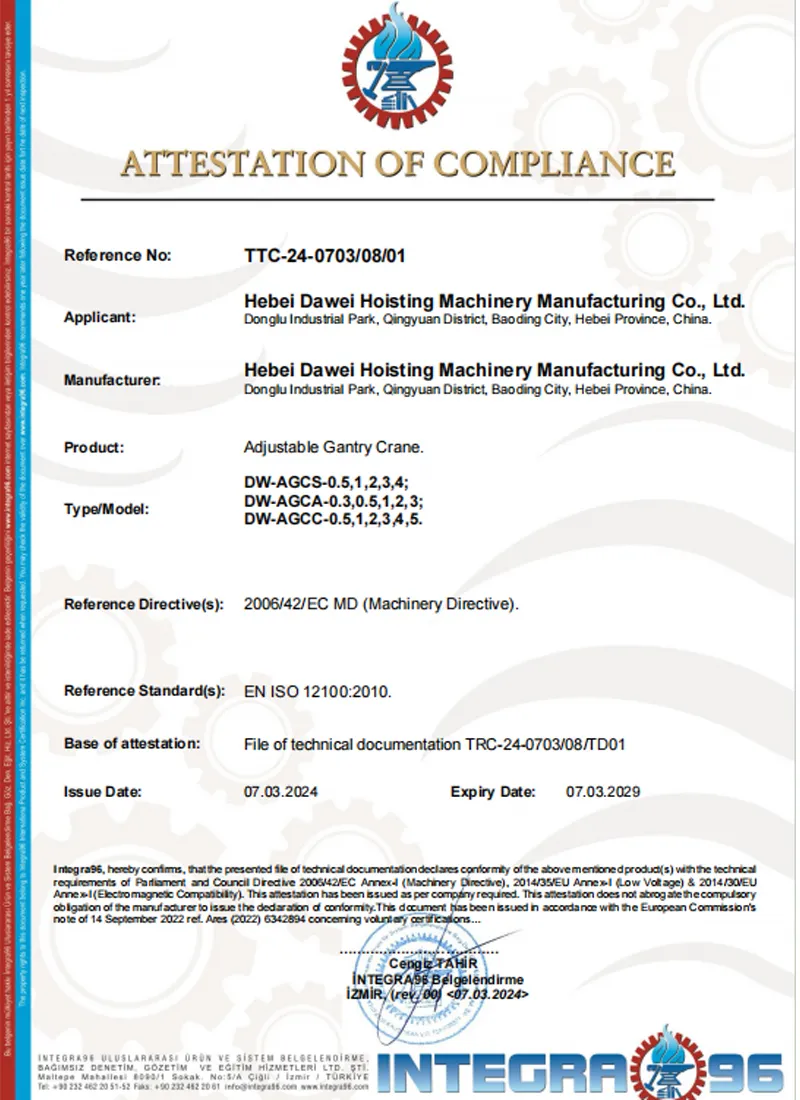Expert Riggers and Machinery Movers for Efficient Equipment Relocation and Installation Solutions
Riggers and Machinery Movers The Unsung Heroes of Heavy Lifting
In the world of industrial operations, riggers and machinery movers play a crucial yet often overlooked role. These professionals are essential to the successful transportation, installation, and relocation of heavy equipment and machinery. With industries ranging from construction and manufacturing to shipbuilding and logistics relying heavily on heavy machinery, the expertise of riggers becomes indispensable. This article dives into the complex world of rigging and the skilled movers who bring heavy machinery to life.
Understanding Rigging
Rigging involves using equipment and techniques to lift, move, and secure heavy objects safely. This can include cranes, hoists, chains, slings, and other tools designed to handle the immense weight and size of industrial machinery. Riggers must understand the dynamics involved in lifting and moving large items, including center of gravity, load stability, and ambient conditions that could affect safety.
A significant aspect of rigging is preparing the lifting configuration. It involves calculating load weights, selecting the appropriate equipment, and determining the best angles for lifting. Riggers often rely on technical drawings and specifications to devise a plan that ensures machinery is moved with utmost precision and safety.
The Role of Machinery Movers
Machinery movers specialize in the transportation and installation of heavy equipment. This includes tasks such as disassembling machinery, transporting it to a new location, and then reassembling it for operation. These professionals possess specialized knowledge and skills that are critical when handling large machines that require exact placement to function properly.
One of the primary challenges that machinery movers face is ensuring that delicate components are not damaged during the moving process. This can include anything from factory machines to loading docks and generators. Each piece of machinery has unique requirements, and movers must be well-versed in the specific handling needs to prevent costly damages.
Safety First
riggers machinery movers

Safety is a paramount concern in the rigging and moving industry. With heavy machinery comes the risk of accidents and injuries. Rigging crews must adhere to strict safety guidelines set by organizations such as OSHA (Occupational Safety and Health Administration) to ensure that all operations comply with legal and safety standards. Regular training and certification also play a crucial role in maintaining high safety standards among riggers and machinery movers.
Before any operation, a pre-lift inspection is conducted. Riggers assess the site's conditions, the equipment's mechanical integrity, and the load's stability. Communicating effectively with team members is vital during the entire process, ensuring that everyone is aware of their responsibilities and the latest developments in any ongoing operations.
Advancements in Technology
The rigging and machinery moving industry has evolved significantly thanks to technological advancements. Modern equipment such as hydraulic lifts, computerized rigging systems, and drones for site assessment have enhanced efficiency and safety. These tools allow riggers and movers to handle increasingly complex projects that were once considered nearly impossible.
Additionally, the implementation of load monitoring systems ensures that moving heavy equipment is done within safe limits. Data-driven analytics assist riggers in making informed decisions about load capacities and equipment usage.
Conclusion
Riggers and machinery movers are the backbone of industries that depend on heavy equipment. Their expertise not only ensures that machines are safely and efficiently transported but also that operations run smoothly without unnecessary delays or damage. As technology continues to advance, the skills and tools in the rigging and machinery moving industry will evolve, making it even more important for these professionals to stay informed and adaptable.
In conclusion, while riggers and machinery movers may not receive the recognition they deserve, their contributions are invaluable. The seamless operation of numerous industrial sectors relies heavily on their skills, foresight, and dedication to safety. As we move towards a more technologically driven future, the importance of these unsung heroes will undoubtedly continue to grow.
-
Unlock Seamless Relocation with Our Heavy Equipment Moving ExpertiseNewsJun.06,2025
-
Unleash Unrivaled Flexibility with Our Adjustable Gantry CraneNewsJun.06,2025
-
Unleash Heavy-Duty Efficiency with Our Industrial Gantry Crane SolutionsNewsJun.06,2025
-
Revolutionize Steel Handling with Our Magnetic Lifter RangeNewsJun.06,2025
-
Master Equipment Mobility with Premium Machinery Mover SolutionsNewsJun.06,2025
-
Elevate Your Material Handling with Magnetic Lifter TechnologyNewsJun.06,2025
-
YS Permanent Lifting Magnets: The Smarter Way to Handle SteelNewsMay.22,2025
